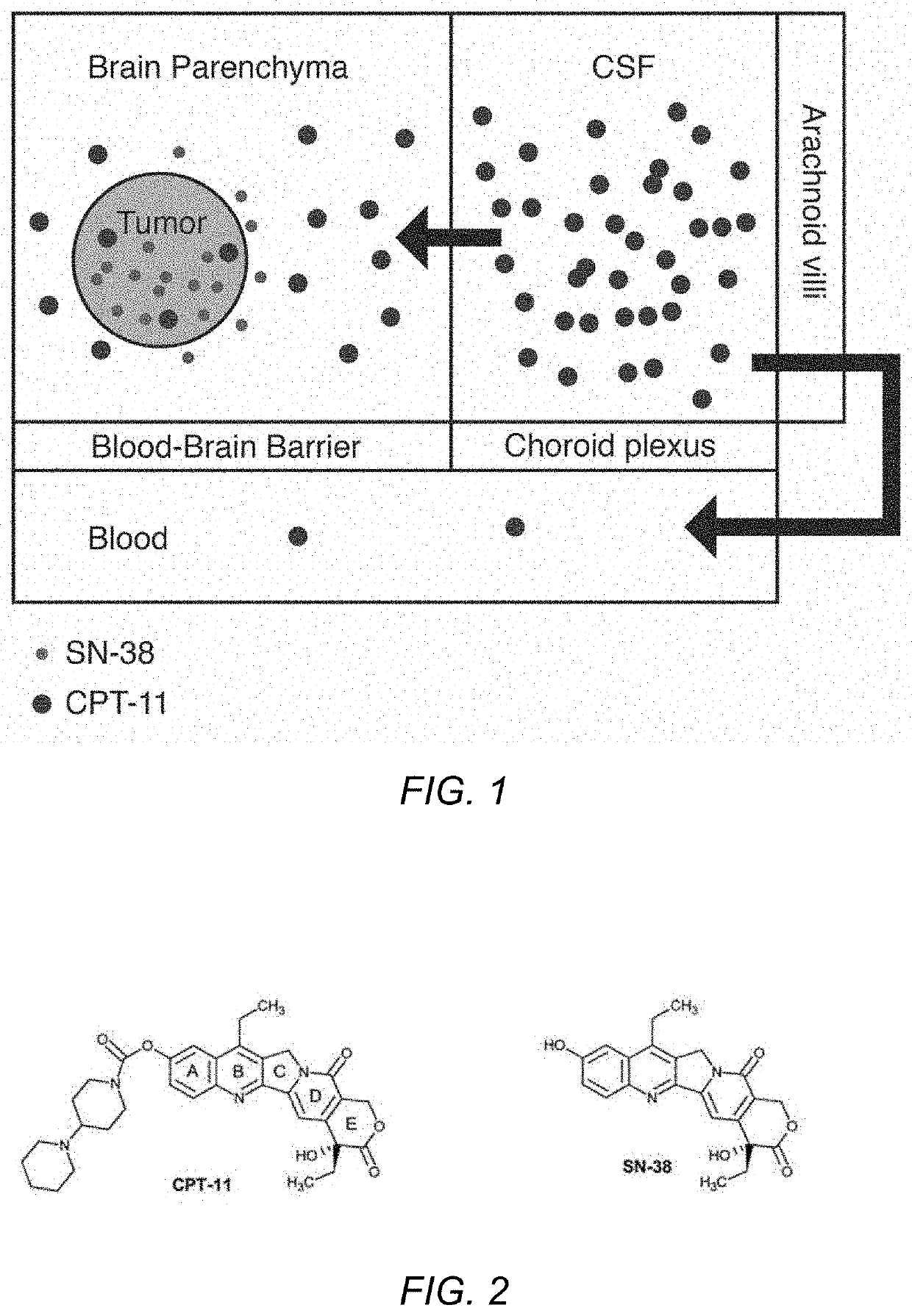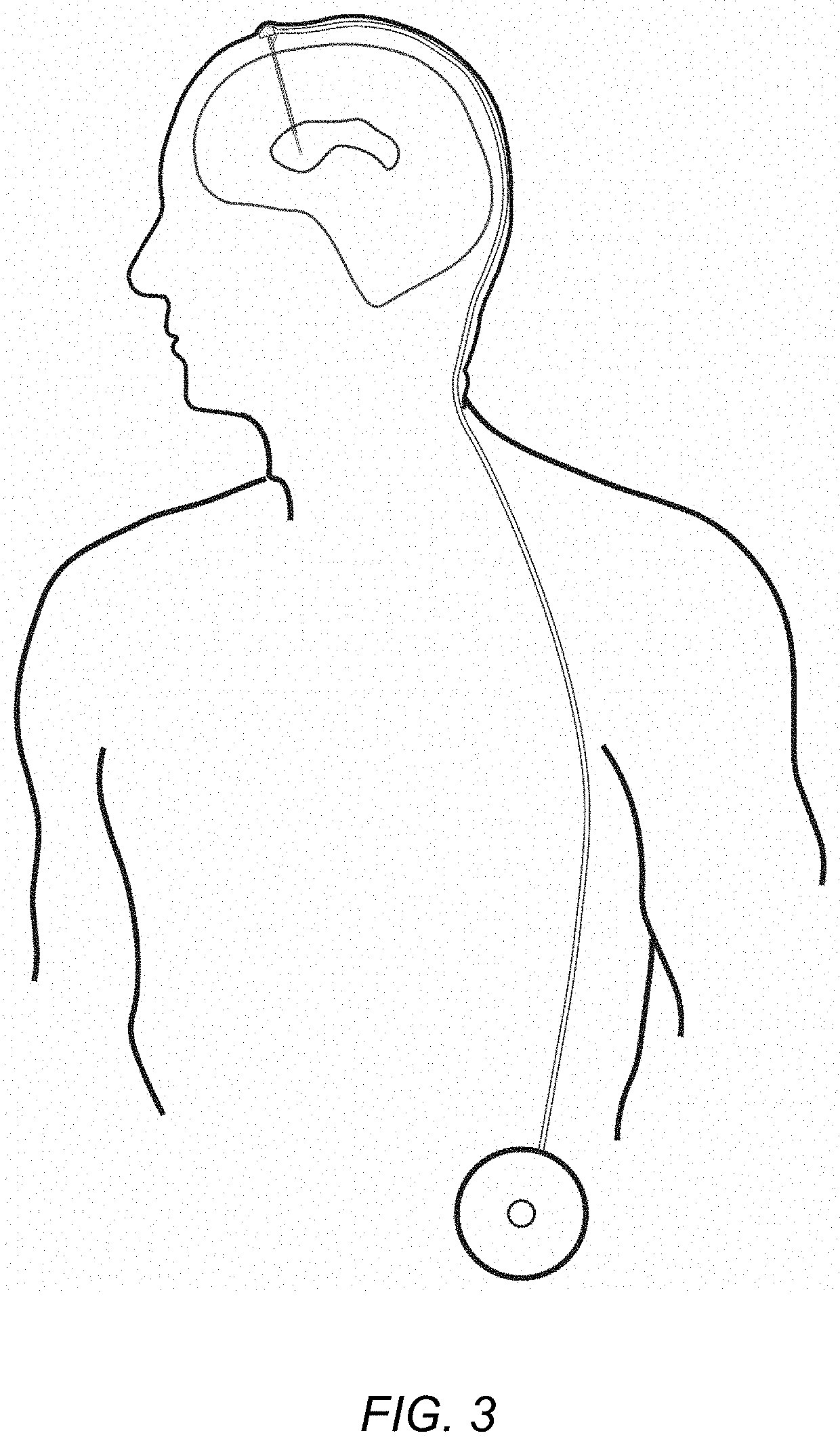Direct brain administration of chemotherapeutics to the CSF for patients with primary and secondary brain tumors
a brain tumor and chemotherapeutic agent technology, applied in the direction of antineoplastic agents, pharmaceutical delivery mechanisms, medical preparations, etc., can solve the problems of not being widely used today, affecting the treatment effect, and the natural history of the disease still a quick relentless demise, so as to achieve further tolerance and reduce the incidence of aseptic ventriculitis
- Summary
- Abstract
- Description
- Claims
- Application Information
AI Technical Summary
Benefits of technology
Problems solved by technology
Method used
Image
Examples
Embodiment Construction
Definitions
[0048]Unless defined otherwise, all technical and scientific terms used herein have the same meaning as commonly understood by one of ordinary skill in the art.
[0049]The term “catheter” as used herein generally refers to medical devices that can be inserted in the body to treat diseases or perform a surgical procedure.
[0050]The term “connected” as used herein generally refers to pieces which may be joined or linked together.
[0051]The term “coupled” as used herein generally refers to pieces which may be used operatively with each other, or joined or linked together, with or without one or more intervening members.
[0052]The term “directly” as used herein generally refers to one structure in physical contact with another structure, or, when used in reference to a procedure, means that one process effects another process or structure without the involvement of an intermediate step or component.
Overview of Ideal Molecular Properties—Solubility, Molecular Weight and Protein Bin...
PUM
| Property | Measurement | Unit |
|---|---|---|
| Length | aaaaa | aaaaa |
| Fraction | aaaaa | aaaaa |
| Fraction | aaaaa | aaaaa |
Abstract
Description
Claims
Application Information
 Login to View More
Login to View More - R&D
- Intellectual Property
- Life Sciences
- Materials
- Tech Scout
- Unparalleled Data Quality
- Higher Quality Content
- 60% Fewer Hallucinations
Browse by: Latest US Patents, China's latest patents, Technical Efficacy Thesaurus, Application Domain, Technology Topic, Popular Technical Reports.
© 2025 PatSnap. All rights reserved.Legal|Privacy policy|Modern Slavery Act Transparency Statement|Sitemap|About US| Contact US: help@patsnap.com



